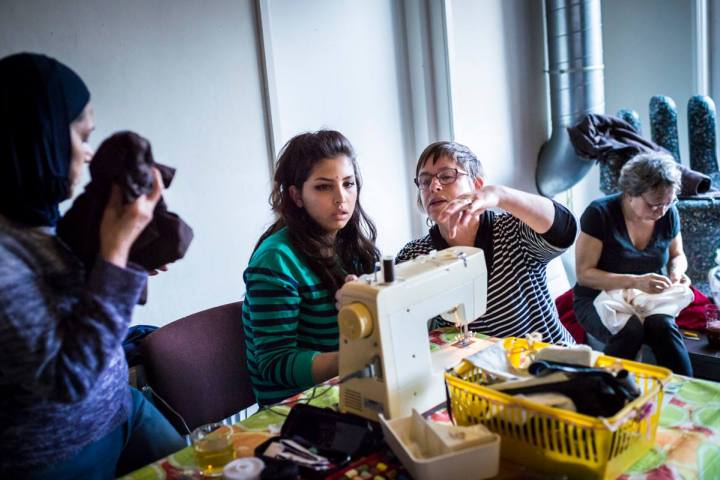
“In the place where a Repair Café is located, you’ll find tools and materials to help you make any repairs you need,” the organization explains on its website. “On clothes, furniture, electrical appliances, bicycles, crockery, appliances, toys, et cetera. You’ll also find expert volunteers, with repair skills in all kinds of fields.”
While Repair Cafés are heralded as learning experiences and places to build community, they also serve a very real environmental need. In 2013, 254 million tons of garbage were generated in the United States alone — this included furniture, clothing, and appliances, some of which might’ve been repaired (and saved from the dumpster) by a café.
Indeed, the organization notes, “Things are being used for longer and don’t have to be thrown away,” which in turn “reduces the volume of raw materials and energy needed to make new products.” The end result could be lower CO2 emissions, an ever more salient concern as we look to protect our environment.
Repairing hobbyists, however, promise that their goal is not to detract from business that might otherwise be enjoyed by professional repairmen and women. Rather, the organization says, its organizers hope to use the cafés to encourage visitors to seek help from “the few professionals still around.” Ultimately, the organization seeks to help visitors “see their possessions in a new light,” which is “essential to kindle people’s enthusiasm for a sustainable society.”
So if you’re looking to get something fixed or want to help fix something yourself, you can visit one in your area or start one yourself.
Editors' Recommendations
- Check out these Ring video doorbell alternatives that don’t require a subscription
- Don’t panic, but GPU prices are starting to rise again
- During spring cleaning, don’t forget smart home security
- The ‘Look and Talk’ feature means you don’t have to say ‘Hey Google’
- Microsoft Defender has one key weakness its rivals don’t


